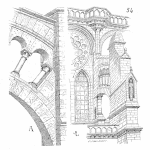
My limited formal training about America’s Industrial Revolution came in tenth grade history class. And my few remaining recollections of my studies from that era include characters like James Watt and Alfred Nobel, and their inventions, the steam engine and dynamite. Oh, and how could I forget Eli Whitney and his cotton gin?
Now 40 years later, my interest in manufacturing has grown far beyond these elementary school lessons, and the Industrial Revolution continues to intrigue me. Yes, this era was rife with its inventors and their inventions. But the enduring gains from this era were the philosophies of manufacturing that transcended the specific inventions. [Read more…]













